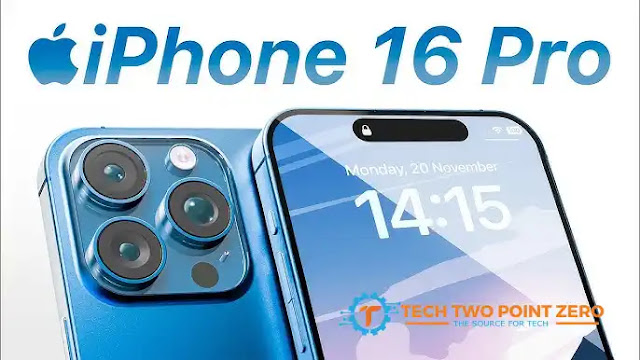Although 5G networks have been
tested in only a handful of countries in the world, some technology companies
in some countries are already planning the next generation of 5G, i.e. 6G
networks. But what exactly is the difference between this 6G network and the 5G
network, and how will this 6G network work? Let’s take a look at the 6G network
today, which you and I may never use in our lifetime.
But before starting the
discussion, it is good to know that at the time of writing this post, 6G
network is not available anywhere in the world and nowhere is even at the stage
of proper testing. It is still a technology that cannot be said with certainty
whether it will be available at a proper consumer level even within the next 20
years. So, if you are only interested in knowing what is 6G network and how it
plans to work, then just keep reading this article. However, in November last
year, China launched a terahertz-capable 6G satellite into the sky, but that
was only an experiment.
What is 6G network?
At a very basic level, 6G is
definitely the next generation of wireless communication technology that will
be available sometime in the future. As you can already imagine, 6G is planned
to further improve the current cellular network infrastructure and bring faster
and more reliable internet services. However, to talk about how 6G is special,
first of all we need to know that 6G technology will be different from the
current networks, i.e. 4G or 5G networks.
If faster and more reliable
internet is the only difference, why don’t we just call this new technology
Faster 5G or Enhanced 5G or 5G+? This is because network speed is not the only
factor in naming the generation of a wireless network. Each of these standards
requires hardware manufacturers to take into account several other
architecture-level issues.
The reason 6G is called upgraded
5G is that manufacturers will have to redesign their entire network
architecture and communication suite of their products to work with 6G
networks. It is for the same reason that 5G networks are not given the standard
of just upgraded 4G or any such. Because to provide 5G network, the carriers
have to use towers made of completely new technology. And this is the reason
why it is still possible to bring 5G networks in some places of only a few
countries.
Purpose of 6G network
At the moment, no company has
been able to say anything about the core features of the 6G network and what
will be new, but telecom companies from different parts of the world are
already thinking about what the new 6G network can bring. When it comes to
bandwidth, the 6G network is expected to provide data transfer speeds of around
95 gigabits per second. Besides, it is assumed that the 6G network will bring much
improvement in latency and network reality.
Like the 5G network, the 6G
network will be built with a focus on the “Internet of Things” ecosystem.
Because, of course, for those of us who sit at home and browse Facebook on the
Internet and watch YouTube videos, the amount of bandwidth that the 4G network
provides at the moment is enough. A casual user like us will never notice the
difference between the speed of 5G and 6G networks unless they do a speed test.
The difference between 5G and 6G will be noticed only when the number of
Internet-connected devices increases in an area or the number of Internet users
increases. And at the current rate of population growth in the world, it may be
another 10-15 years.
However, the capability of 6G
will be seen only in this situation, because network scalability is much more
important than network core bandwidth in such situations. In this case,
reducing the response time or latency is more important than the amount of
Internet bandwidth to serve the users. The main objective of the 6G network
will be to increase internet bandwidth as well as improve latency and network
reliability. This is why companies like AT&T or Samsung are optimistic
about 6G networks.
How does 6G work?
To be honest none of us know how
6G will be developed and how it will work. Because, of course, 6G is still just
a plan. However, network engineers and researchers have been able to give some
idea of how 6G will work. In layman’s terms, 6G will essentially transmit data
at ultra-high-frequency. In theory, 5G can go up to 100 GHz frequency but no
country is going above 39 GHz for 5G network yet. In the case of 6G,
researchers believe that they will be able to take the frequency much higher
than 100 GHz, and there are even plans to take it into the terahertz range. But
the waves of 6G will be very short and cannot travel far. As a result, some
challenges have to be faced in this case.
Limitations
A typical 4G LTE network
transceiver can transmit its cells up to 10 miles. So if an operator wants
their customers to get a stable 4G signal forever, they need to install 4G
towers every 10 miles or less. Now if the operator wants to upgrade their
network to 5G and want to provide the same service to the users, then now they
have to install a 5G transceiver every 1000 feet instead of 10 miles. Because,
compared to 4G, the wave of 5G can travel much less distance.
It is not impossible to do, but
very difficult and expensive. This is why there are very few places in the
world with 5G signal. Now if you think about 6G, then you can imagine that in
this case, for a good signal, the transceivers have to be placed so close to
each other that if you think about the cost, it becomes a next to impossible
plan for any country. However, researchers are always trying to find a better
solution to this problem, and if a solution is found, it will be a step forward
toward the implementation of the 6G network plan.
When will be available 6G?
According to a white paper
published by one of the world’s most popular tech industry, Samsung, if
everything goes well, work on this project named ‘Define a 6G Vision’ may start this year. According to Samsung, the 6G network may be completed in
2028. And then we can see 6 G-supported products coming in the market. However,
Samsung thinks it will take a few more years before 6G networks are available
at the consumer level. General consumers can expect to use 6G networks around
2030.
But before I started writing, I
said that 6G may be a technology that I or you may never use in life. Yes, the
reason I think so is that even if 6G is available at the consumer level around
2030, it will take at least another 50-60 years for 6G to be available in
Bangladesh!
 Tech Two Point Zero All Technology related information and other news suppers
Tech Two Point Zero All Technology related information and other news suppers





